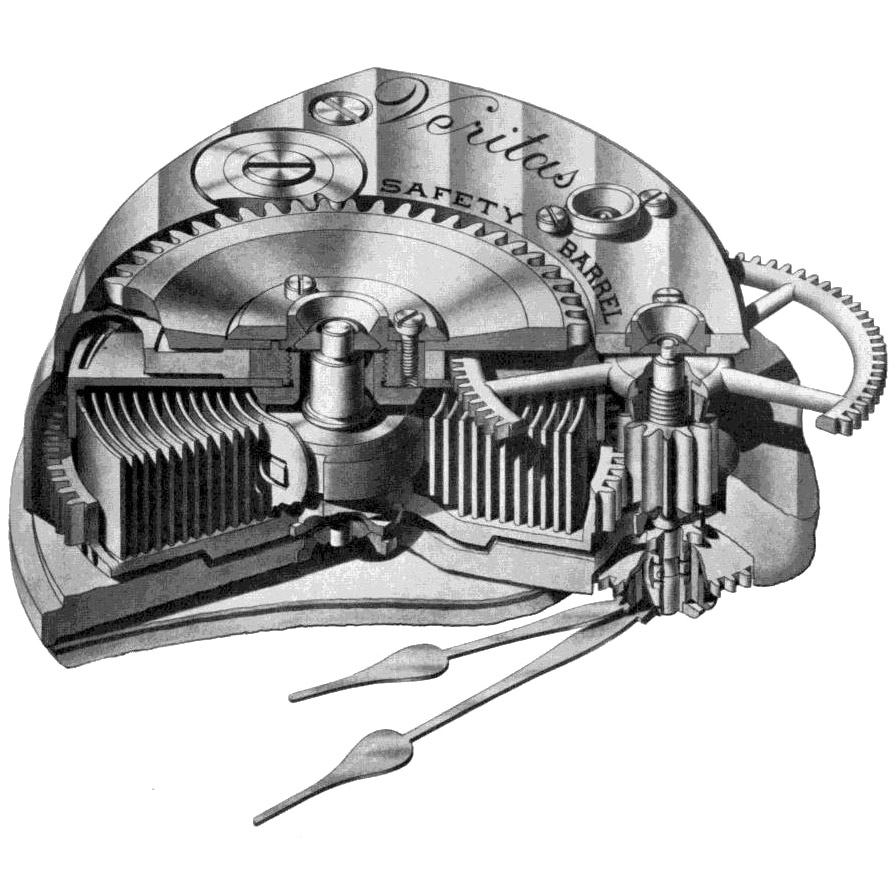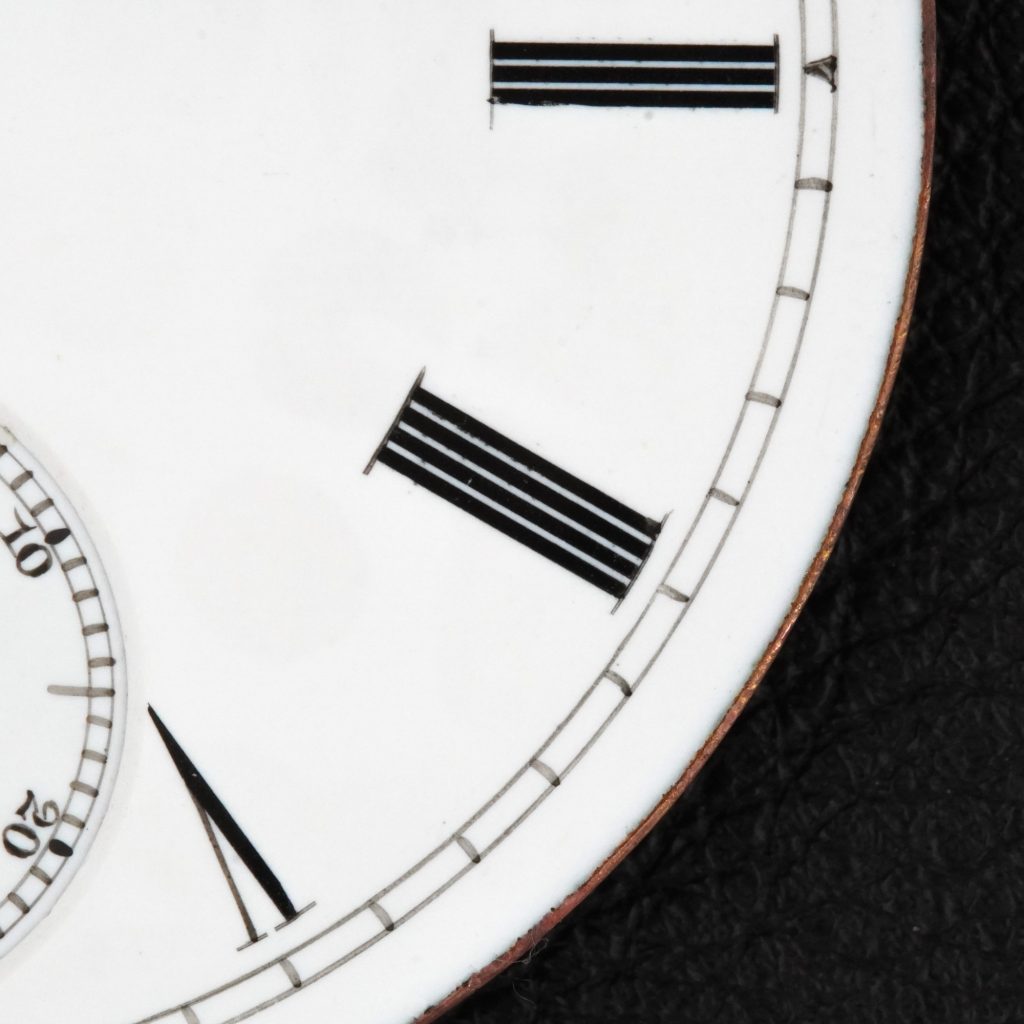Cutaway Illustration of the “Veritas Model” Safety Barrel
When introduced in March 1901, the “Veritas Model” was equipped with a new safety barrel, offering an effective replacement for the safety pinion used on older models. The barrel design, already implemented in other Elgin models at the time, was patented by George Hunter in 1897.
In original advertisements, this feature was distinctly described as a “patent safety barrel with spring box rigidly mounted on bridge.”
The safety feature is achieved by rigidly attaching the winding wheel to the spring barrel, or “spring box.” When the watch is wound, this barrel is rotated around the stationary arbor and main wheel, coiling the mainspring inside the barrel. When the watch runs, the spring barrel remains stationary while the arbor and main wheel rotate to exert power to the train. In contrast, the older going barrel design operates by the barrel arbor being rotated to wind the watch. When running, the barrel and main wheel rotates to exert power to the train while the arbor remains stationary.
When a mainspring breaks in a going barrel, most of the shock is exerted directly to the center pinion and the rest of the train, often causing damage when a safety pinion is not present. The safety barrel adverts this shock to the train by absorbing it into the steel barrel and robust winding mechanism.




